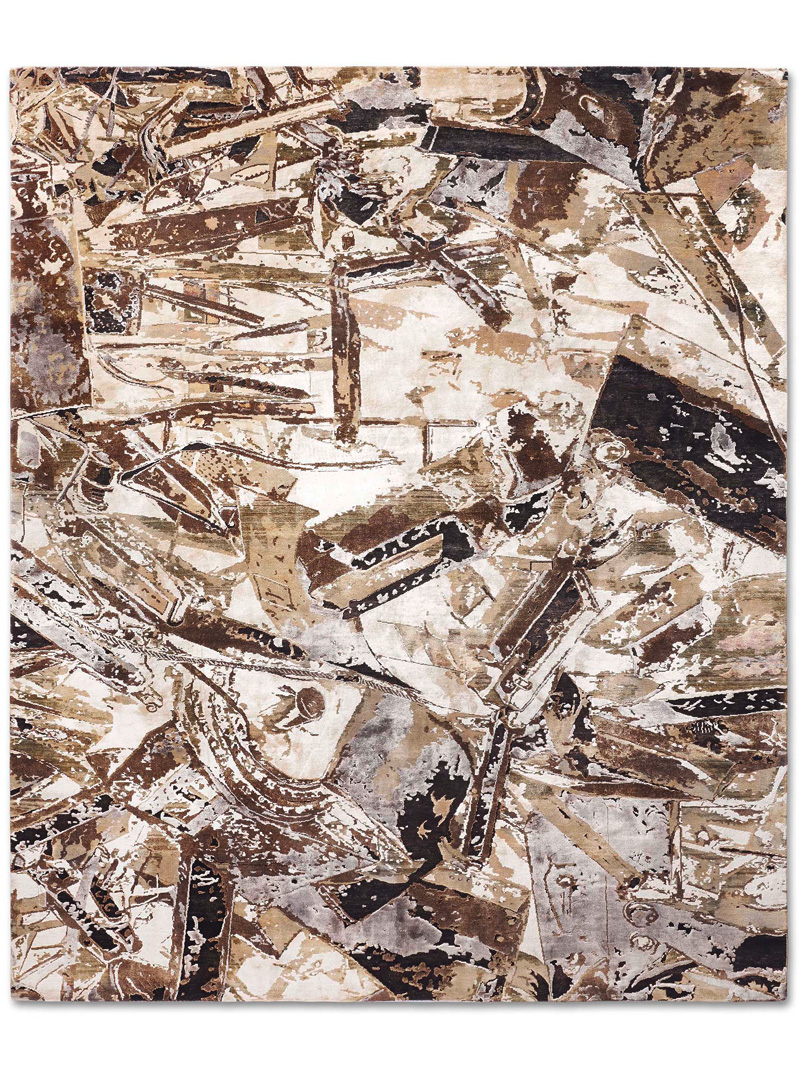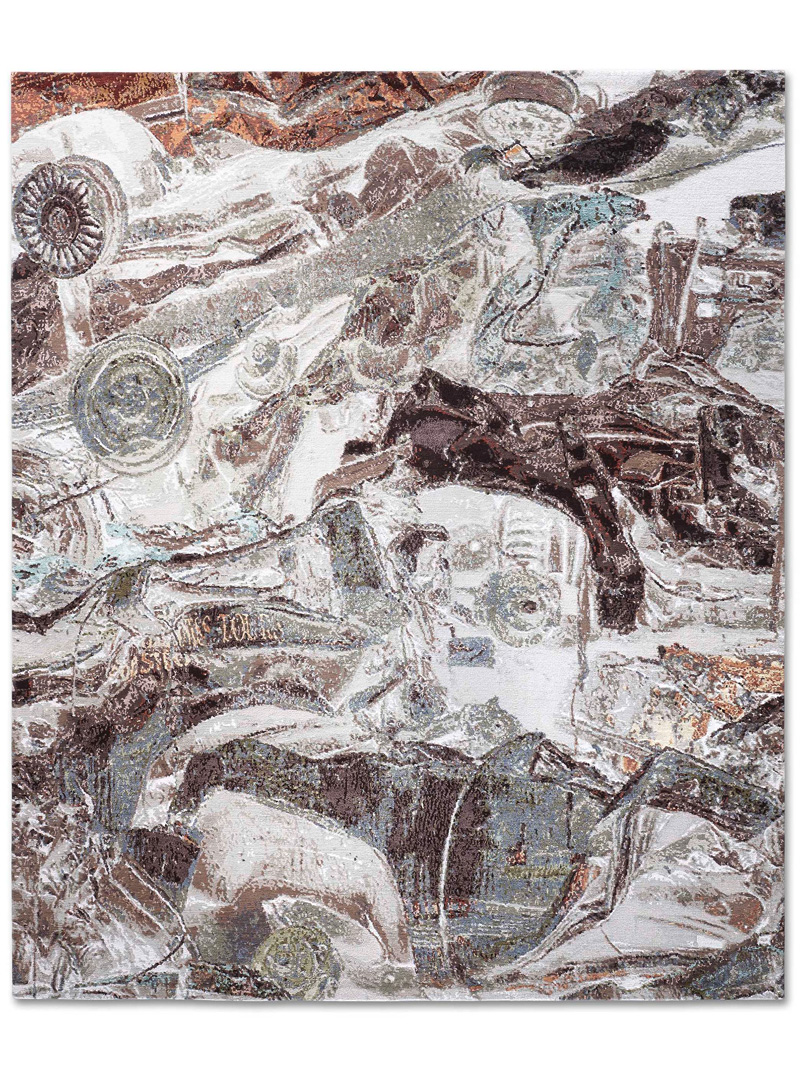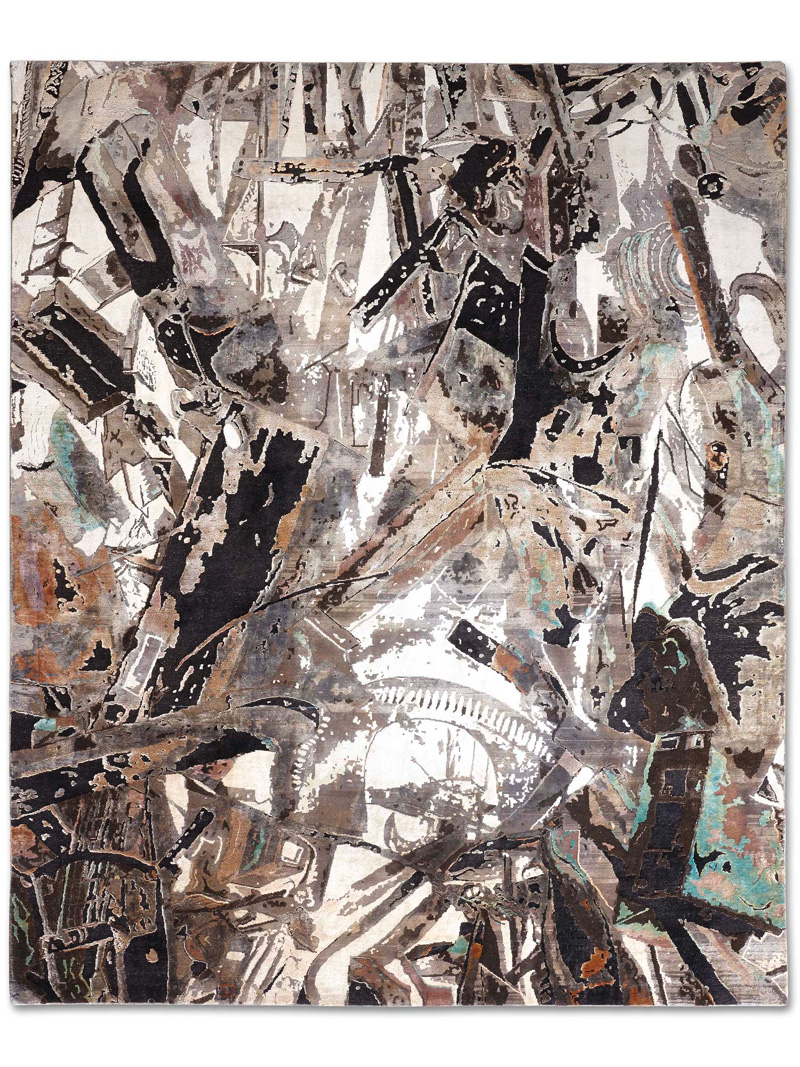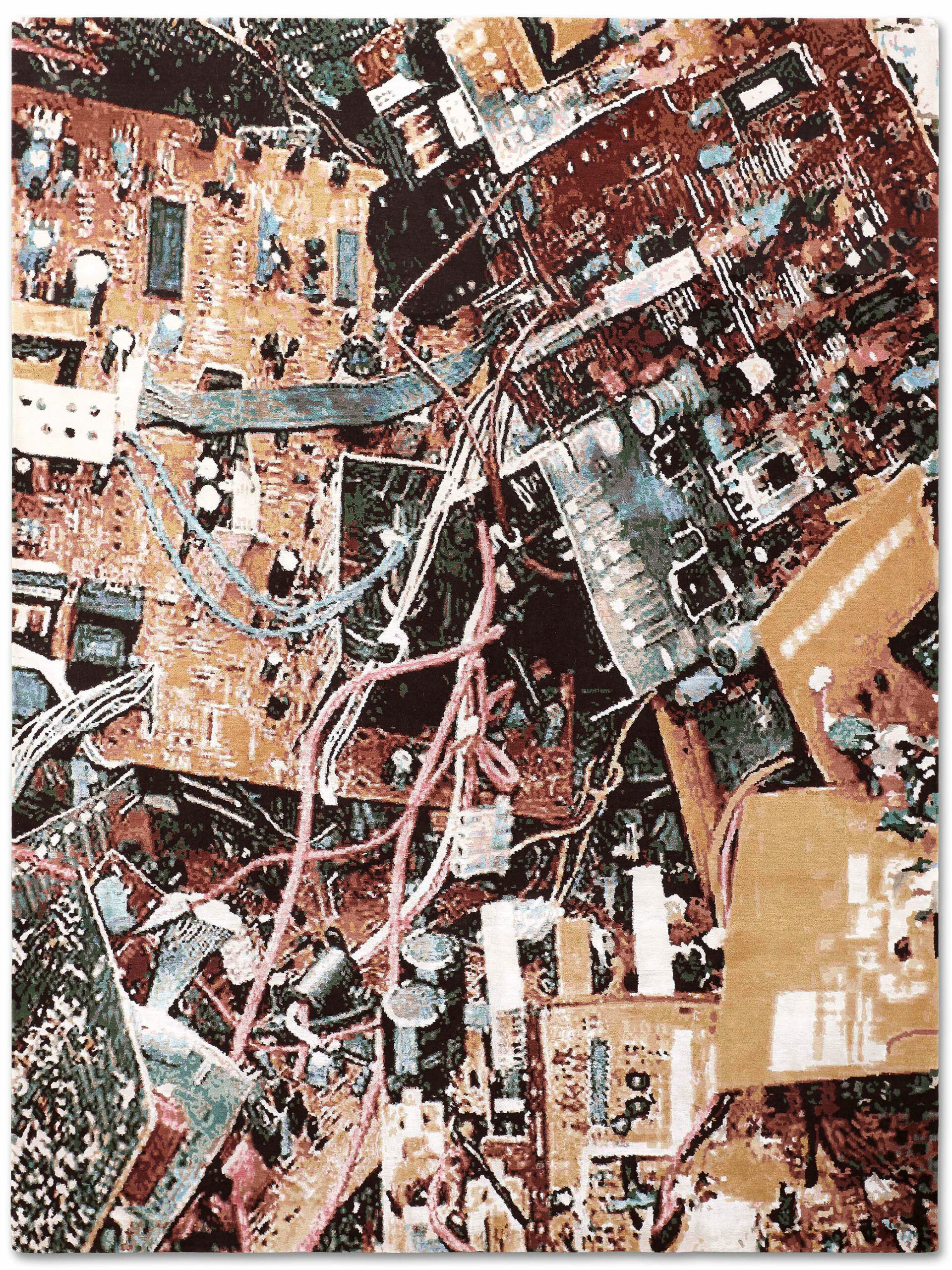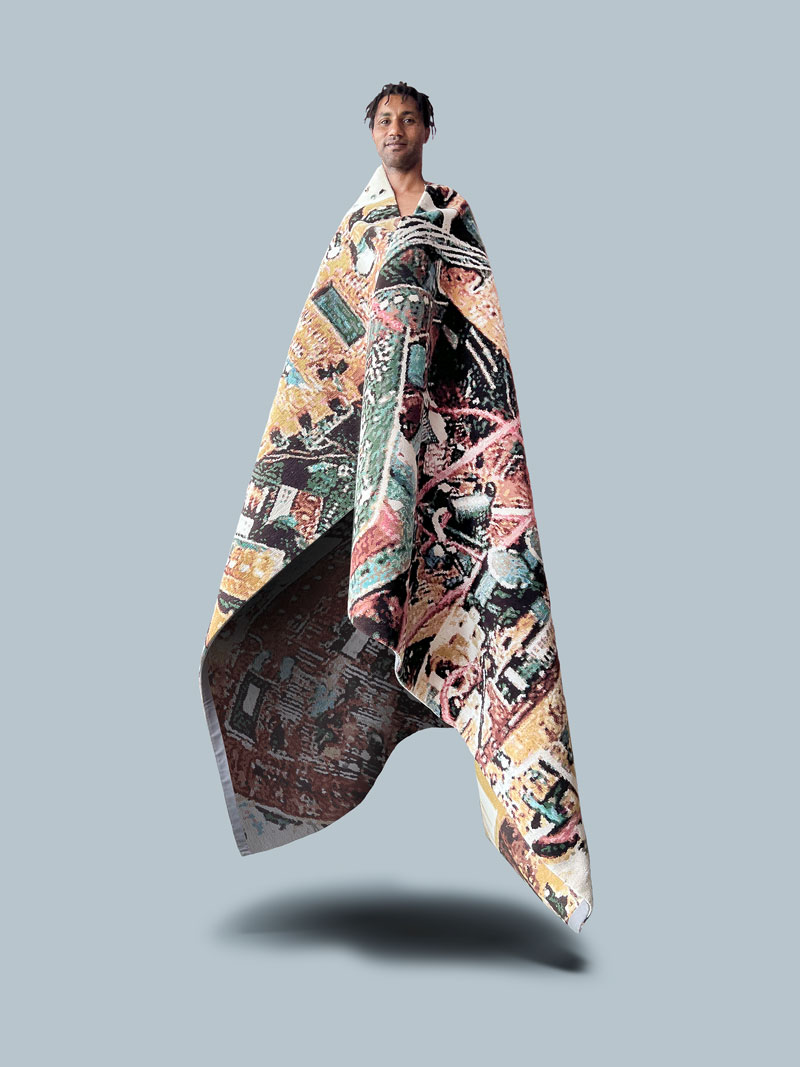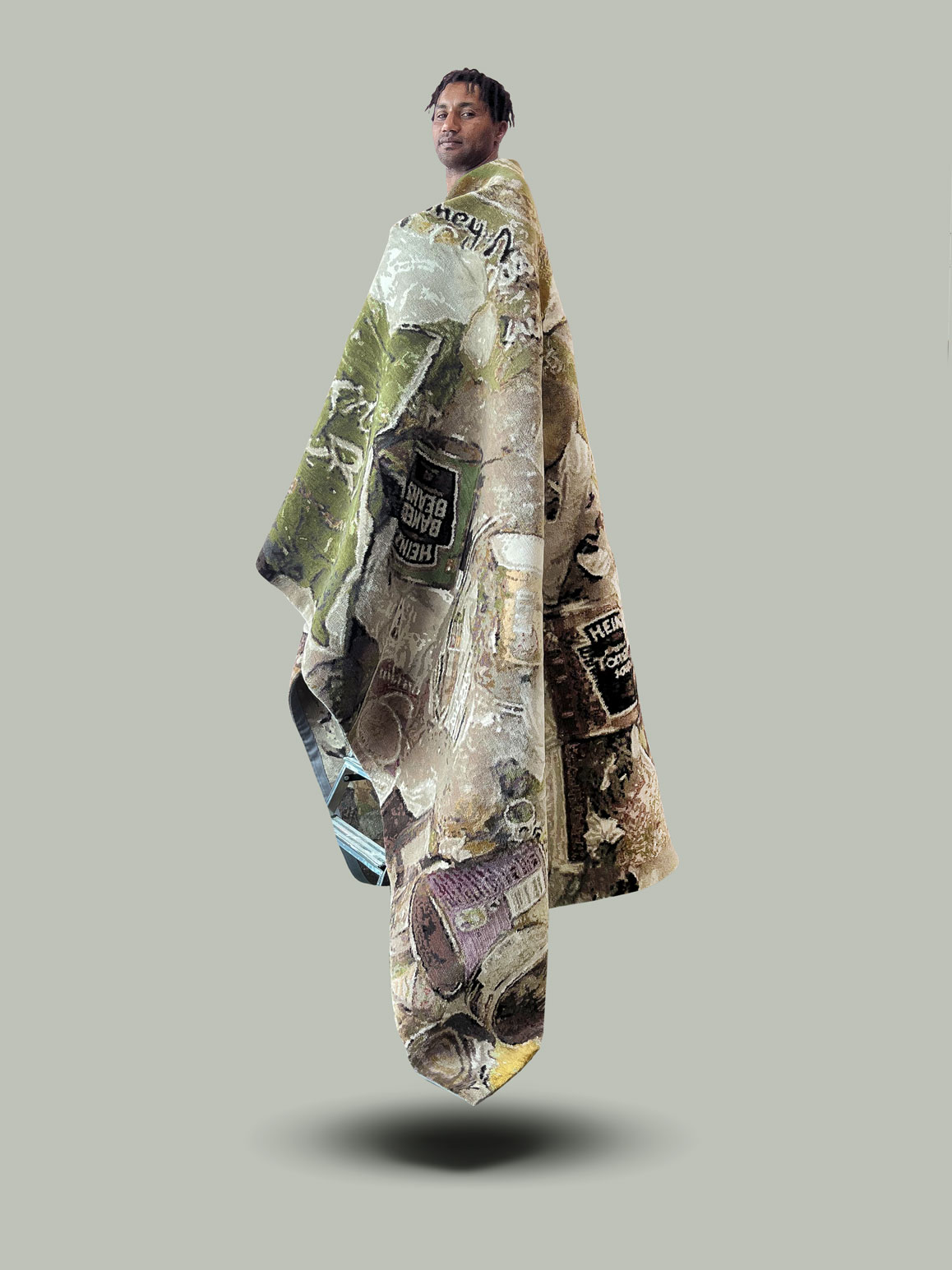Skin of Civilization Skin Composition No. 02 Converted
Our contemporary modern rug art is produced in Rajasthan, India, as a hand-knotted Persian weave in 11/11 knot quality in a nice blend of wool and silk. The surface comes in a high/low texture and creates a patina, where we oxidize particular wool fields to create a topography of material and texture.
Skin of Civilization Skin Composition No. 02 Converted
Our contemporary modern rug art is produced in Rajasthan, India, as a hand-knotted Persian weave in 11/11 knot quality in a nice blend of wool and silk. The surface comes in a high/low texture and creates a patina, where we oxidize particular wool fields to create a topography of material and texture.
| Technics | Persian weave |
|---|---|
| Knot-density | 11/11 knot |
| Material | 30% wool 70% silk |
| Surface | Oxidized pile |
| Pile-height | 2-3 mm |
| Production | Hand-knotted rug |
| Origin | India |
| Serial no. | AR-WD-400564 |
| Size | Select |
A Philosophical Odyssey into the Textile Landscape
RUG STAR’s Skin of Civilization collection and its accompanying catalogue take us on an extended journey, exploring the expanded possibilities of rug design. While Sigmund Freud’s The Ego and the Id influenced the previous collection, this time Friedrich Nietzsche’s Thus Spake Zarathustra serves as a fundamental inspiration.
Design, much like art, is not a spontaneous creation but the result of accumulated ideas, experiences, conversations, and experiments. Thus, the story woven into these rugs is, to some extent, the designer’s own narrative. But how can Nietzsche’s philosophical work inform our understanding of textiles and influence Dahlmanns’s rug designs?
Just as Nietzsche found inspiration while walking in the alpine pastures of Switzerland, Dahlmanns contemplates the relationship between the earth and humanity in his designs. Nietzsche’s aphoristic prose style examines themes such as eternal recurrence, the cyclic nature of time, the death of God, man’s quest for power, and conquering the environment.
The collection’s design reflects this distinctive style, featuring quirky pictograms, a distinct typographic persona, and visual references that come together to create the designer’s own visual language. Dahlmanns explores the concept of patina, considering how skin and the surface of objects act as protection against the outside world and technological advancements. Simultaneously, the skin absorbs influences from the external environment while reflecting the development of our inner world.
The theme of patina or surface holds two meanings in this collection. Firstly, it is encountered through references to skin or surfaces such as tires, bark, and marks of industrial civilization like detritus. Secondly, the rugs themselves manifest a physical allusion to patina with a layered effect reminiscent of antique textiles or weathered metallic objects. This unique finishing technique, exclusive to Rug Star, is applied to rugs made with the Persian knot, enabling the creation of their particular texture through an oxidization process.
Setting philosophical adventures aside, we must not lose sight of the primary purpose that rugs serve, extending beyond surface admiration. Rugs are often recognized as an art form, a viewpoint that Rug Star’s work affirms. However, rugs must also fulfill their function as floor coverings, harmonizing with various furniture and decorations in a room, defining space and functions. They must be adaptable, scalable in design, provide color, warmth, depth, promote good acoustics, and allow for customization. Dahlmanns’s understanding of these functions is influenced by his training as an architect, viewing his work as a liberal form of interior design.
The rigorous training architects undergo instills a discipline that goes beyond articulating space; it includes supreme technical competence. Unlocking the potential of a rug requires skills that many textile designers may not possess. While traditionalists may confine their vision within the surface and borders of a rug’s composition, Dahlmanns’s unrestrained imagination serves his unique understanding of the rug’s role within an interior.
Dahlmanns’s radical approach to rug design has revitalized the world of contemporary rugs over the past decade. The Skin of Civilization collection showcases his ongoing journey, where his technical virtuosity and highly individual visual language continue to provoke and challenge. It is evident that his vision will continue to shape and inspire the industry for years to come.
